Some good news: Wetlands are doing way better than we thought
But the future of these life-nurturing ecological superscapes remains perilous
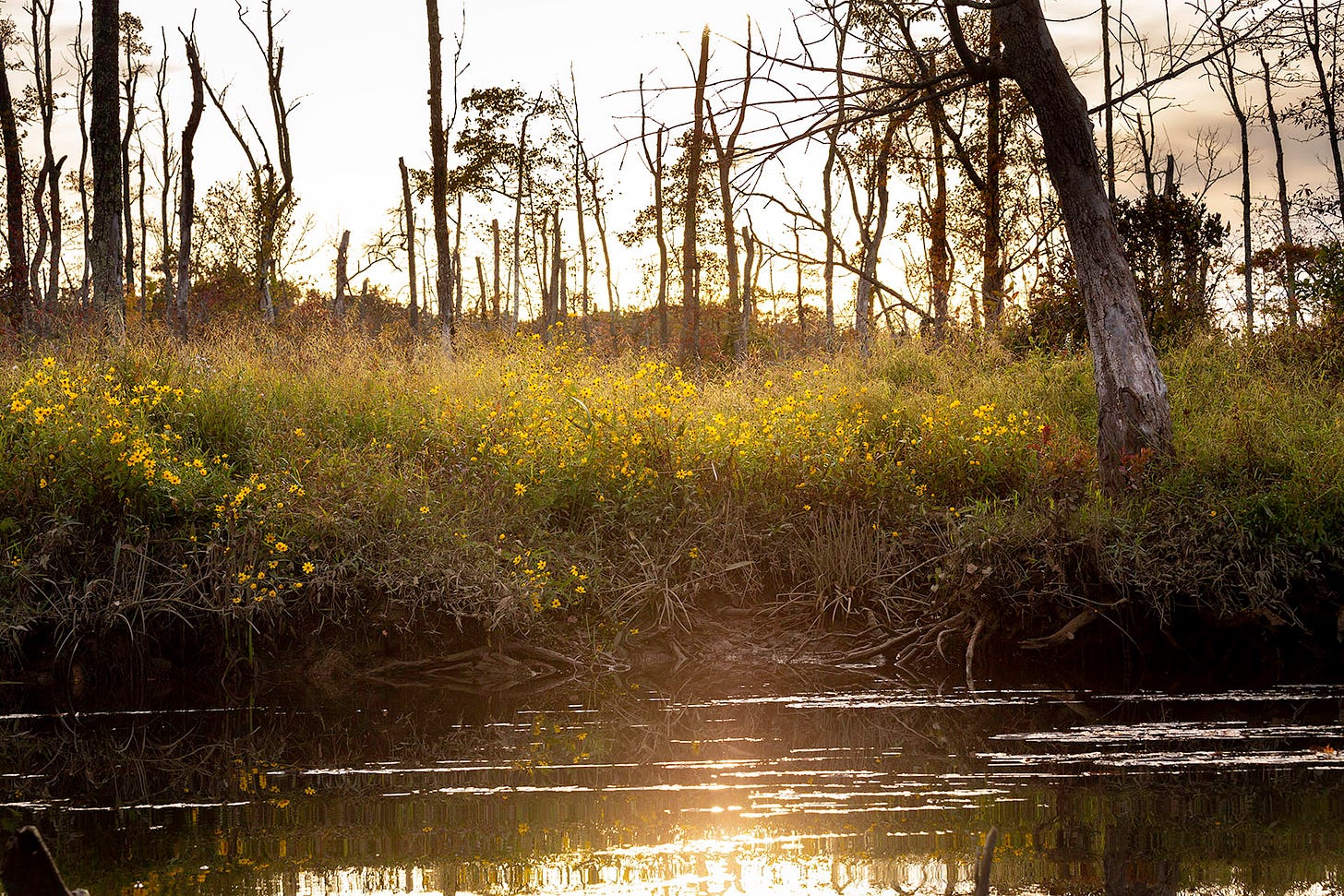
What does the word “wetland” evoke for you?
For me, wetlands mean, first of all, life: diverse life, abundant life, buzzing and humming and swimming and swooping and flying life; life hunting and fishing other life. Wetlands also mean beauty, and mystery — a feeling that around every bend, just under every surface, is something new and unexplored — something perhaps spectacular, perhaps dangerous. Sometimes too, wetlands mean discomfort, especially if mosquitoes or black flies are present, or the sun is striking down on a hot, sticky day, or my boot is lodged in a foot of mud. And as I’ve come to understand and appreciate all that wetlands do, the word evokes landscapes that are far more valuable — both for nature and for us — than they have any right to be.
I’ve found myself turning more and more toward wetlands as I age. When I was younger, they held little interest for me. I wanted to range over mountains, put miles under my hiking boots, get great views. But lately, I’ve been pulled into quieter, flatter reaches, where progress is often measured in feet rather than miles and views may extend no farther than the few yards between my canoe and the nearest marsh or forest edge.
Three and a half years ago, wetlands intruded into my life in a bigger way, when my friend Leslie Brice and I rounded a bend on a local creek and came face to trunk with groves of dead trees. We soon launched the Ash Forest Project to draw attention to the devastasting impact the emerald ash borer is having on our local forested wetlands. Throughout the pandemic we squeezed our feet into rubber boots and plunged into swamps where the water could be ankle or waist deep, depending on the tides. We spent hours almost without moving, taking in the nuances and subtleties of these transforming landscapes, in hopes we could translate their magic and fragility for people who had probably not given them much thought.
All this is prelude for a recent paper that caught my eye. Reporting in Nature, a group of researchers found that at the planetary scale, we’ve held onto far more of our wetlands than had been previously estimated. While the paper was entitled “Extensive global wetland loss over the past three centuries,” the authors’ top takeaway was that the extent of this loss was actually much less than what other scientists had estimated, because earlier researchers had simply extrapolated loss rates from wealthy countries — the ones that have had technology to alter wetlands at massive scale — to the entire world.
A reader recently told me that she liked my writing but it was always so sad. So I offer you a (qualified) good-news story: Wetlands are doing better than we thought!
But what exactly does that mean?
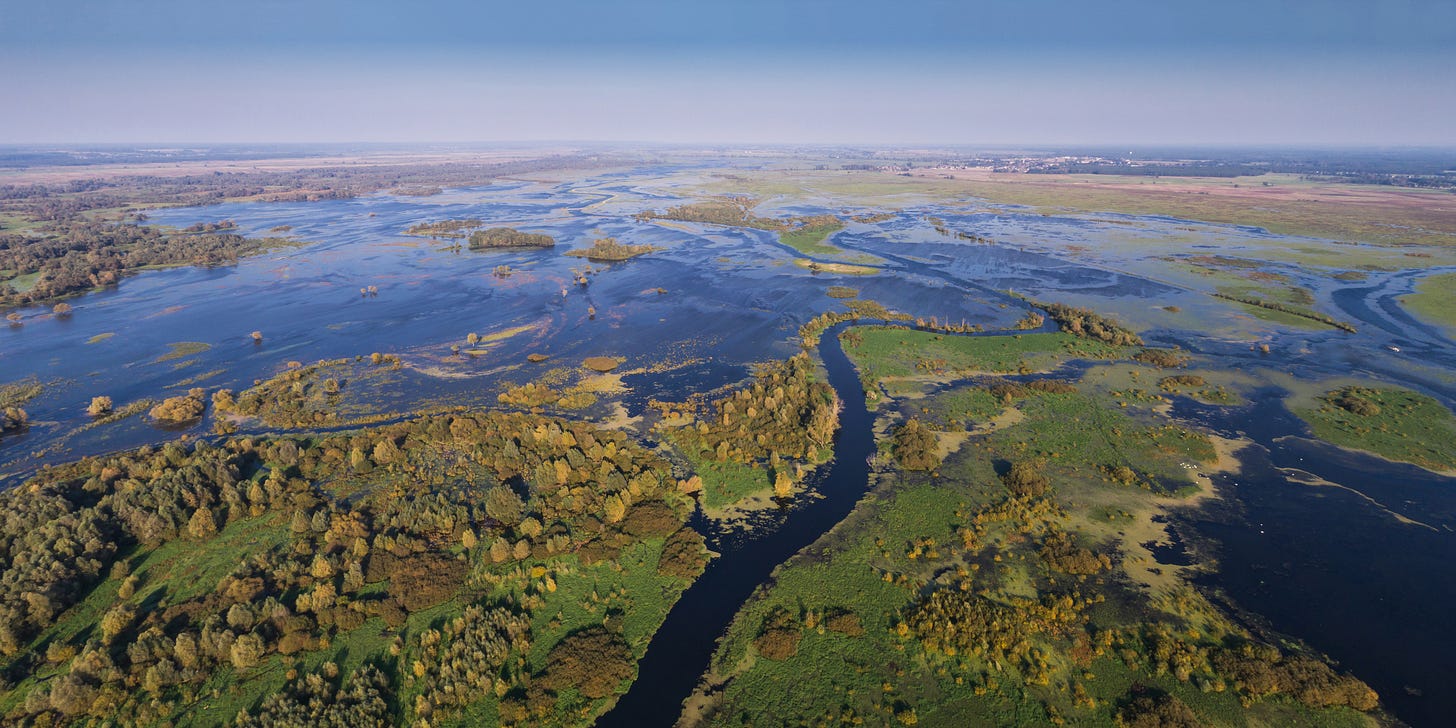
If we could travel back a few centuries, we would find ourselves in a vastly different terrestrial world: one much spongier and soggier than the one we inhabit today. For example, we’re used to seeing rain tumble down pavement and grassy slopes into storm sewers or fast-moving streams and rivers, and quickly flushed away from our homes and businesses. When this doesn’t happen, we call it a flood and it’s often a disaster.
But nature did not construct itself to shed water quickly. For one thing, nature invented the beaver, a creature obsessed with damming rivers and creating wetlands. An essential feature of landscapes around the world, wetlands trap water on land, giving rise to all sorts of unique environments with delightful names — bogs, swamps, fens, bayous, marshes, pocosins, vernal pools, fluddles and more.
Vast numbers of plants are adapted to intermittent comings and goings of water. countless species of insects and amphibians have life cycles that take them to the water to feed or lay eggs. Many fish begin their lives in sheltered shallow wetland pools before heading out to larger rivers, bays and oceans. Wetland obligate birds such as the prothonotary warbler, which flits through the swamp forests of the Atlantic coastal plain during migration season, nest in holes in dead swamp trees.
In modern parlance, wetlands are biodiversity hotspots, ecologically punching far above their modest sizes. Wetlands occupy only about five percent of the continental U.S., yet nearly half of our threatened and endangered species depend on them for survival, according to the EPA. Globally, an estimated two in five species depend on wetlands.

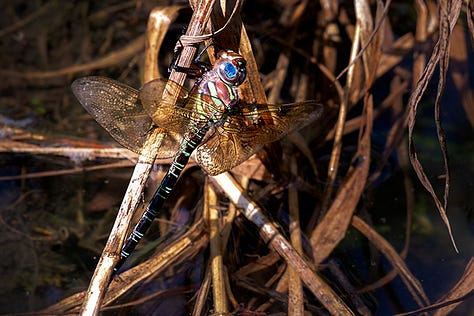
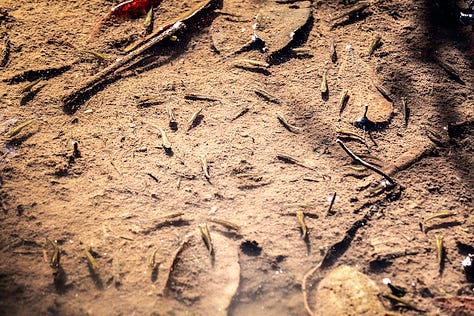
Wetlands are human habitats, too. Their abundance has fed many a people, and they have long been centers of foraging, fishing and hunting. But for us modern industrial humans, wetlands can be a challenge. Underwater at times, above water at others, changing with the ebbs and flows of season, tide, weather, wetlands strain and complicate our binary categories of dry land and wet water. As we made the transition to agriculture, and especially to industrial agriculture, wetlands increasingly became seen as impediments to progress. Industrial man — and yes, it was mostly men — launched a war on wetlands, and a related war on the beavers that created so many of them.
The Nature paper authors examined wetland loss since 1700, combining historical maps and records with modern computer modeling. They found that wetlands covering 3.4 million square kilometers — nearly one-sixth the area of the United States or, if you prefer, twice the area of Alaska — have vanished. That’s about a fifth of the world’s original wetlands — a pretty big chunk of our planet!
(The Nature paper looked at interior wetlands. A 2022 satellite-based Science study on coastal wetlands found that 13,700 square kilometers — nearly the area of Connecticut — had been lost globally in the last two decades, offset by a gain of 9,700 square kilometers. While those numbers are small compared to the interior wetlands figures, coastal wetlands play an especially important role in protecting against storm surges.)
Most of our lost wetlands were drained for agriculture, the Nature authors found. In one of their maps, a gash of dark blue cuts across the middle of the U.S., where an epic-scale wetland drainage effort helped birth what we now call the Corn Belt, one of the most productive farming regions the world has ever seen.
In an evocative New Yorker essay, Annie Proulx recently described the assault on Ohio’s Great Black Swamp, one of the major Midwestern wetlands that needed to be tamed: “…a few men with experience in wet soils tried drainage with ditches and tiles. Excited by their success, the farmers attacked the Black Swamp; a mad make-your-own-land rush was on. In the eighteen-eighties, an Ohio man, James B. Hill, frustrated by the slow work of laying drainage tiles, invented a machine he called the Buckeye Traction Digger. Every farmer wanted one, and the Black Swamp began to dry out.”
This effort was aided by a longstanding cultural bias against wetlands, as miasmatic, uncivilized landscapes of disease and horror, fit for criminals and monsters. Proulx quotes the science writer Sharon Levy: “The tough people who conquered the Great Black Swamp did so at great personal expense, and they’ve passed down a deep and abiding loathing of wetlands. They are considered a menace, a threat, a thing to be overcome.”
I was dismayed to learn from the Nature paper that the two countries I claim as homes are two of the worst wetland offenders. The U.S. has the dubious distinction of being number one in total wetland area demolished. Germany, my maternal homeland, comes in fourth in percent of wetlands lost, with more than four in five of its original wetland hectares gone.
It’s no coincidence that the U.S. and Germany are also two of the world’s wealthiest countries. The discomfiting truth is that wetland destruction has been immensely profitable. Those of us who are privileged to enjoy high standards of living in the early 21st century owe that in part to the wetland draining fervor of prior generations. When I read the Nature paper, I thought of the Rhine River, flowing between enormous earthen levees through the flat country of northwestern Germany, where much of my family lives. Every time I visit, I walk or bike on those levees and marvel at the surrounding farm fields dotted with small villages, a pastoral landscape that strikes me as quintessentially German. Now I will also think of a different landscape: one of immense wetlands that once thrived in the Rhine’s flood plain, before being cut off by those levees.
Yet agriculture is far from the only human institution to take a toll on wetlands. Many of our great cities, such as New York and, famously, Washington, D.C., were built in part on marsh and swamp land that first had to be drained. I was recently startled to learn about a case of relatively recent wetland destruction less than a mile from my home just outside D.C. — one vividly documented in aerial photographs. In the left-most image below taken in 1938, of an area in Prince George’s County, Maryland just over the northeast border with D.C., the Anacostia River traces a languid curve through what appears to be a mosaic of lowland forest and marsh. Nearly a dozen small tributaries reach out like tentacles into the surrounding landscape. It’s an astonishingly wild scene for an area that was already largely urbanized.




By 1965 (upper right photo), the river had been widened and straitjacketed into a linear channel and most of the trees were gone, replaced by a cemetery and what looks like a pile of rubble or fill, perhaps including material dredged from the channel. Most of the tributaries are gone, too. A new marina has appeared at Bladensburg. While thin strips of swamp forest still hug the banks of the Anacostia and its tributary Dueling Creek, they’re wisps of what had been there less than three decades earlier.
By 1993, baseball diamonds appear on the rubble hill. And in the most recent photo, taken just last year, a paved road leads to a parking lot near the ball fields. According to Jorge Bogantes Montero, a naturalist with the Anacostia Watershed Society, the paving of that road wiped out several ephemeral wetlands known as vernal pools, which are tiny depressions that fill with water in winter and spring and dry up in summer, and that are used by frogs, salamanders and other species. Most likely the paving crew had no idea there was anything of value.
I don’t know if anyone protested when this green oasis was transformed into what I’m sure were seen at the time — and probably by many to this day — as improved uses. (I’d love to know; if you have any information on this, please reach out.) But I’m certain that few people who visit the cemetery or park today ever think about the soggy past of the dry land they walk or play on. Cemeteries and ball fields clearly meet human needs. But so do wetlands. It’s painful to think of the natural wonder that once existed a short bike ride from my house — all the encounters with insects and amphibians and birds that children of the surrounding neighborhoods are missing out on — the sense of solitude and isolation one would have felt paddling a canoe on that riverine curve, sheltered from the surrounding rectilinear human landscape. As sea level rise pushes up on tidal rivers like the Anacostia in the decades to come, we will miss those wetlands all the more.
Wait a minute, you’re probably saying. Where’s the good news you promised?
For one, as mentioned earlier, the overall wetland loss rate of 21 percent that the Nature authors found is much lower than previous estimates, which often fall around 50 percent and range as high as 87(!) percent. It turns out that many of the world’s less developed and less populated regions have held onto far more of their wetlands than anyone recognized. Enormous, carbon-trapping peatlands of Siberia, the Amazon, Canada and the Congo remain largely intact, at least for now. (Parts of the Congo peatlands have recently come under pressure from oil drilling.) Amazon basin wetlands in particular stand out as nearly entirely intact — a counter-narrative to the usual media depiction of the Amazon as a landscape of environmental degradation and plunder.
Even in the U.S., things are better than I would have expected, considering how rarely one reads positive news about wetlands. Despite all our draining and destroying, we’ve managed to hold onto almost two-thirds of our wetlands — a higher proportion than China, Pakistan, many European countries and, surprisingly, Rwanda.
Wetlands persist even in the heart of the much-abused Corn Belt. I was surprised to read fellow Substack writer Bill Davison’s recent description of a project that identified 8,000 ephemeral wetlands known as “fluddles” — perhaps a Midwest equivalent to our vernal pools — in just one Illinois county.
Our wetlands’ relative good fortune owes partly to the fact that the U.S. is a vast country whose population density, despite several centuries of growth and development, remains far lower than, say, much of Europe or many parts of Asia. Wetlands have not so much been protected as they’ve escaped, particularly in areas not seen as prime farmland. The fact that so many wetlands have survived past assaults means a lot of opportunity for conservation today.
The last few decades have also seen the belated advent of pro-wetlands policy, such as the “no net loss” rule established under the first President Bush. There are lots of eyes looking at wetlands now, and regulations provide mechanisms for the public to get involved in actions that could impact major wetlands, such as a proposed mine that environmentalists believe will threaten Georgia’s Okefenokee Swamp. Both where I live in the D.C. area and where my mother’s family lives in western Germany, one can visit rather lavishly restored wetlands, often paid for with fees resulting from destruction elsewhere.
But these restorations are typically miniscule compared to historical losses, and even decades after restoration, wetlands rarely recover their full complement of species and functions. And many wetlands remain in a precarious situation, physically and legally. The U.S.’s largest wetland region, the “prairie potholes” of the upper Midwest, is under intense pressure as global warming and high commodity prices shove the Corn Belt northward into the Dakotas. The Biden administration, at the same time it has declared support for the “30 by 30” conservation initiative, has said it wants to ramp up biofuels, which will almost certainly drive farmers to plow up native grasslands that surround the pothole wetlands into crop fields. As I described in a 2021 story for National Geographic, this conversion comes at the expense of wetlands that provide breeding grounds for more than half of the U.S.’s ducks and waterfowl.
An upcoming Supreme Court decision in the case Sackett v. EPA could deny federal protections to wetlands that lack a continuous connection to a regulated waterway. Meanwhile, as the vernal pool example shows, lots of small and ephemeral wetlands are not being monitored by anyone, and can easily succumb to human landscape improvement. And even absent direct human disruption, global warming may dry up many inland wetlands while sea level rise floods coastal ones.
But I’m determined to end as I began, on a positive note. Last week, Anacostia Watershed Society staff members and volunteers were out looking for vernal pools. I met up with them in an anonymous federally owned forest alongside Interstate 95, where cars and trucks emitted a ceaseless din that washed over us and all the other creatures inhabiting this space.
To the untrained eye, i.e. mine, the pools we were there to examine were little more than glorified puddles. But as we inspected more closely, their treasures came into view: gelatinous masses of wood frog eggs floating on the surface. They struck me as almost impossibly fragile and vulnerable. But their mere existence implied a powerful resilience: the perpetuation of a cycle of life through countless insults visited on this long-settled landscape. A few scoops of pool water turned up inch-long marbled salamander larvae, another species that relies on these habitats. (Spotted salamanders also use these pools, though we didn’t find any evidence of them.) The watershed society is in the midst of mapping all of Prince George’s County’s vernal pools, in hopes that visibility and recognition will help them avoid the fate of those in Colmar Manor.
A few conservationists and one journalist tromping around looking for vernal pools may seem trivial, but I actually think it represents something quite profound. To lean on an overused metaphor, we seem, as a society, to be reaching a historical and cultural inflection point. No longer do we see wetlands simply or even primarily as “a menace, a threat, a thing to be overcome.” Wetlands have achieved legal status and larger cultural and political cachet. They’re no longer just haunts for hunters, fishers and birders; society at large recognizes their value. Perhaps they’re even on their way to becoming hip?
Human technology can control floods, sequester carbon, block storm surges, filter pollutants or even nurture life. But our engineered systems typically do only one of these tasks at a time, and often at enormous expense. Wetlands do all these things and more — for free. They also have the power to delight and nourish us far more than any levee or sea wall ever will. All they need from us is space and time.
I like to believe that for both societies and individuals, attention to and care for wetlands is a sign of maturity — an acceptance that not everything needs to be forced to be land or water, a comfort with ambiguity and a willingness to loosen our grip on the steering wheel, relinquish some control and recognize that if we allow it to, nature simply does some things better.





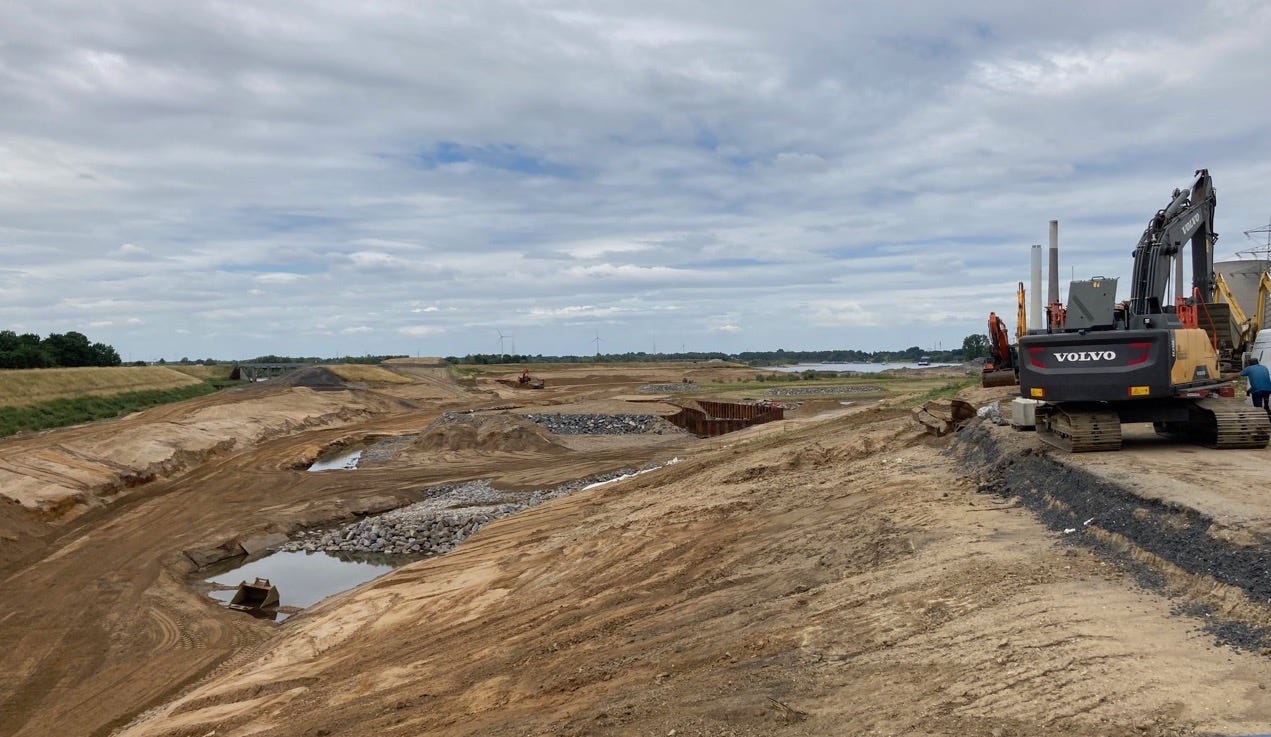




Really nice work, Gabe. Thanks for this. I have on my long list of possible topics a piece on the scale of wetland losses (modified by this recent data) and the good work to revitalize them. Your insights on wetlands are great. I'll be sure to recommend readers to your work. Also, the fate of vernal pools underlies my writing of the Field Guide, sort of. We had a long, losing battle with a development here in Maine - by a botanical garden with Disney ambitions, weirdly enough - that wiped out a small network of pools to build a set of parking lots. Got me thinking that I should be writing about how we got into this mess in the first place...